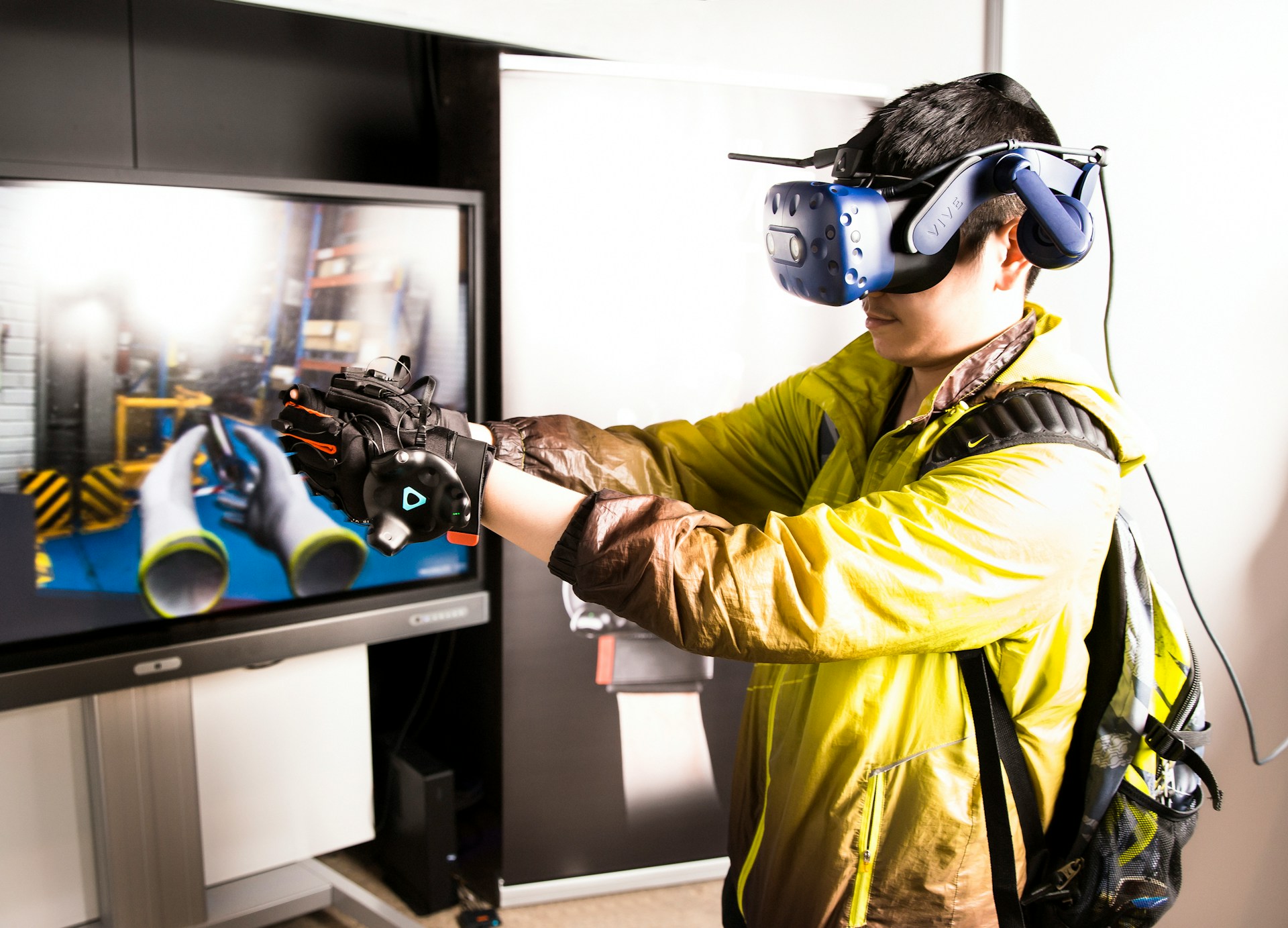The world of augmented reality (AR) gaming has seen explosive growth over the past few years. Integrating haptic feedback into mobile AR games offers the potential to revolutionize the user experience by adding a layer of physical sensation to virtual interactions. However, this innovation presents a unique set of challenges. Understanding and overcoming these hurdles is essential for developers aiming to create immersive and engaging AR games. In this article, we explore the primary challenges of integrating haptic feedback into mobile AR games, the technological constraints, and the future possibilities it holds.
Understanding Haptic Feedback in Mobile AR Games
Haptic feedback refers to the use of touch sensations and vibrations to communicate with users. In the context of mobile AR games, it means providing tactile sensations that correspond with in-game actions or events. This sensory experience can drastically enhance realism and player engagement.
Also read : How can developers create more lifelike animal behaviors using deep learning techniques?
To integrate haptic feedback into AR games, developers must consider the limitations of current mobile devices. Smartphones and tablets have limited space and power, which can restrict the intensity and variety of haptic responses they can produce. Moreover, the consistency and precision of haptic feedback can vary depending on the device’s hardware capabilities.
Achieving Realism: One of the primary challenges is creating realistic haptic sensations that match the visual and auditory aspects of the game. For instance, the vibration pattern for a virtual explosion should feel different from that of a gentle touch. Designing these varied responses requires meticulous attention to detail and advanced programming skills.
Also read : What are the implications of using AI to create customizable storylines in narrative games?
Synchronization: Ensuring that haptic feedback is perfectly synchronized with other game elements is crucial. Any lag or mismatch can break the immersion and frustrate players. This requires robust software algorithms capable of delivering real-time feedback without delay.
By addressing these challenges, developers can significantly enhance the tactile experiences in mobile AR games, offering users a more immersive and enjoyable gaming experience.
Technological Constraints and Limitations
Despite the potential benefits, integrating haptic feedback into mobile AR games is not without its technological constraints. The limited hardware capabilities of mobile devices pose a significant hurdle.
Battery Life: One of the most pressing concerns is battery consumption. Haptic feedback mechanisms consume additional power, which can drain the battery of a mobile device quickly. Developers must strike a balance between providing rich haptic experiences and maintaining acceptable battery life.
Processing Power: Mobile devices have limited processing power. Adding haptic feedback requires additional computational resources, which can slow down the overall performance of the game. Ensuring that the game runs smoothly while delivering haptic feedback is a delicate balancing act.
Compatibility: Not all mobile devices are equipped with advanced haptic engines. Some older devices may not support the desired level of haptic feedback, leading to inconsistent user experiences. Developers must account for a wide range of devices and optimize their games accordingly.
Software Integration: Integrating haptic feedback into the game’s software architecture can be a complex process. It requires specialized knowledge and programming skills. Developers must ensure that the haptic feedback is seamlessly integrated with the game’s code, which can be time-consuming and technically challenging.
Player Experience and Accessibility Considerations
Player experience is at the heart of any successful game. Integrating haptic feedback into mobile AR games can significantly enhance the player’s sense of immersion and engagement. However, it also presents several challenges related to user experience and accessibility.
User Comfort: Overuse of haptic feedback can lead to user discomfort or fatigue. Developers must carefully design haptic responses to avoid overwhelming players. Subtle and well-timed feedback can enhance the gaming experience without causing discomfort.
Customization and Control: Different players have different preferences when it comes to haptic feedback. Some may enjoy strong, frequent vibrations, while others may prefer minimal feedback. Providing options for players to customize the intensity and frequency of haptic feedback can improve user satisfaction.
Accessibility: Haptic feedback can be a valuable tool for making games more accessible to players with visual or auditory impairments. However, developers must ensure that the feedback is inclusive and can be perceived by all players. This requires thoughtful design and testing to ensure that the haptic feedback is both effective and inclusive.
Learning Curve: Players may need time to adapt to haptic feedback, especially if they are not accustomed to it. Clear in-game tutorials and gradual introduction of haptic elements can help players become comfortable with the new sensory experiences.
By considering these aspects, developers can create mobile AR games that not only leverage the benefits of haptic feedback but also provide a comfortable and accessible experience for a diverse player base.
Future Prospects and Innovations
While there are significant challenges to integrating haptic feedback into mobile AR games, the future holds promising possibilities. Advances in technology and innovative solutions are paving the way for more sophisticated and seamless haptic experiences.
Advanced Haptic Engines: Newer mobile devices are being equipped with more advanced haptic engines that can produce a wider range of sensations. These engines can create more realistic and varied tactile feedback, enhancing the immersive experience for players.
AI and Machine Learning: Integrating AI and machine learning algorithms can help optimize haptic feedback based on player behavior and preferences. These technologies can analyze player interactions and dynamically adjust the feedback to enhance the gaming experience.
Wearable Haptics: Wearable haptic devices, such as haptic gloves or vests, are emerging as a potential solution to the limitations of mobile device hardware. These wearables can provide more precise and varied haptic feedback, further enhancing the immersion in AR games.
Cross-Platform Integration: As AR games become more popular, developers are exploring ways to integrate haptic feedback across different platforms, including virtual reality (VR) and console gaming. This cross-platform approach can create a more cohesive and immersive gaming experience for players.
Enhanced Developer Tools: To overcome the technical challenges, new developer tools and frameworks are being developed. These tools can simplify the integration of haptic feedback, making it more accessible to a wider range of developers.
By staying abreast of these advancements and embracing innovative solutions, developers can continue to push the boundaries of what is possible in mobile AR gaming.
Integrating haptic feedback into mobile AR games presents a range of challenges, from technological constraints to player experience considerations. However, the potential benefits of adding tactile sensations to virtual interactions are immense. By addressing the hurdles of hardware limitations, ensuring user comfort, and leveraging future innovations, developers can create more immersive and engaging AR games. As technology continues to evolve, the integration of haptic feedback will likely become more sophisticated and widespread, enhancing the way players interact with and experience mobile AR games. Through careful consideration and innovative approaches, the future of mobile AR gaming holds exciting possibilities for creating truly immersive and tactile experiences.











